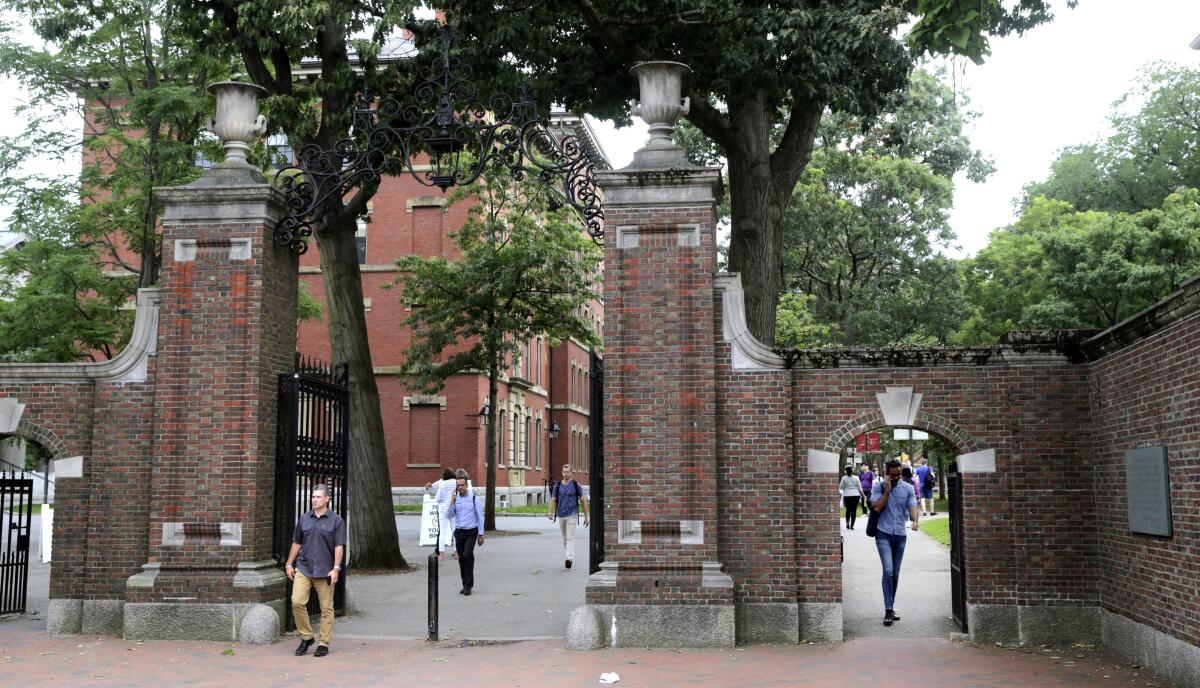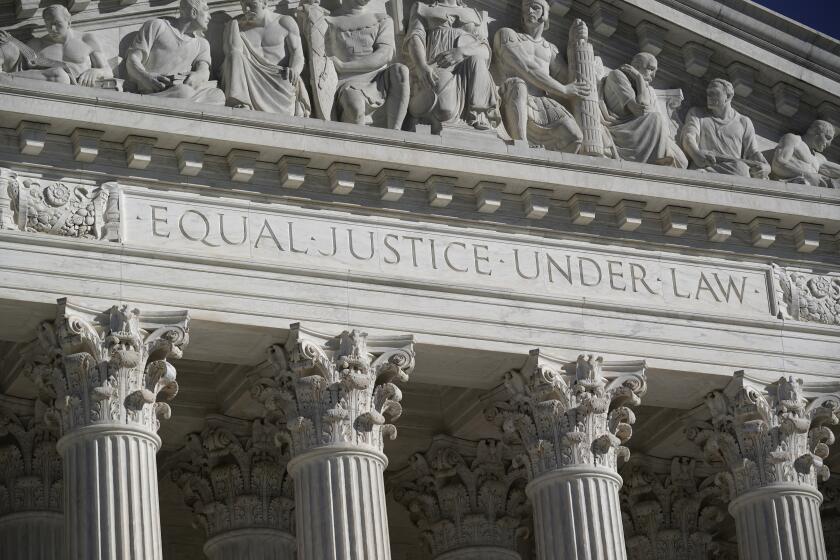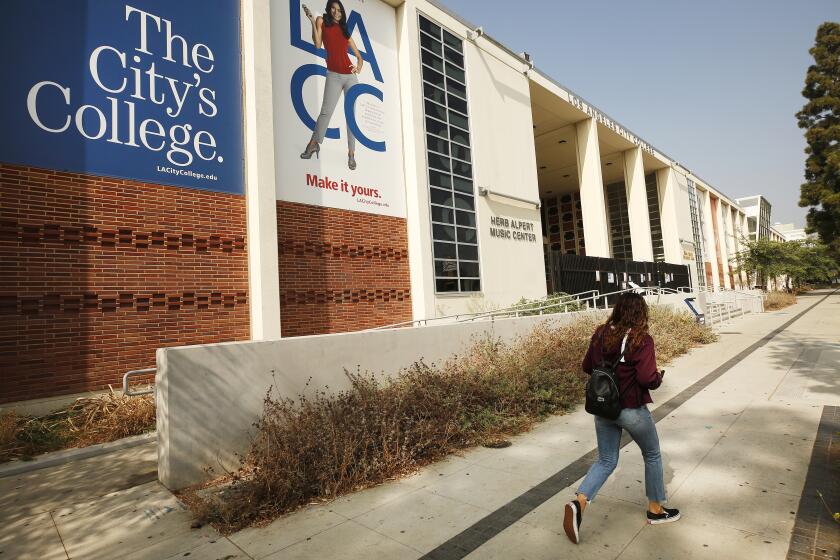Opinion: With an end to affirmative action in higher ed, here’s one way colleges can retain diverse students

- Share via
The Supreme Court’s reversal of a long line of decisions supporting affirmative action in higher education signals a deep-seated denial that inequality continues to be perpetuated by America’s educational system. The decision on Thursday ignores that people have been discriminated against when accessing education and that many have suffered from an unequal socioeconomic system in which higher education attainment can be a ladder to a better life.
Still, inclusion in higher education — which can lead to inclusion in white-collar professions and leadership positions in society — is more complex than simply enrolling a diverse student body. It’s also important to keep students on track once they’ve been admitted, making sure they learn, bond, feel that they belong and ultimately graduate. That’s one reason to diversify the top ranks of faculty. The court’s decision means that fewer ethnic and racial minority students will be admitted, making it even more important that institutions support those who are enrolled, ensuring that attrition is as low as possible.
In my work as a behavioral and data scientist, I’ve seen a strong connection between faculty diversity and student retention rates.
Justice Sandra Day O’Connor’s 2003 prediction that affirmative action college admissions would only last 25 more years may come true if the current court has its way. That would be tragic.
Think back to your own school days: The people who inspired you, advised you and made you feel included were probably both peers and teachers. Connecting with a particular faculty member could make you feel special — that you brought something unique to the program, that you had a sense of psychological safety. On the flip side, if you didn’t engage with faculty, you may have felt alienated and isolated. You may have begun to wonder whether you should quit the program or the school altogether.
Diverse faculty bodies can provide students with different ways to dream about their own future and remain engaged in school. They help students see how people from different backgrounds can succeed from varied starting points. Once students from ethnic and racial minorities get into a program, the presence of diverse faculty members helps them persist and earn their degrees. This persistence is grounded in what has been called a growth mind-set, and it’s something that a diverse faculty body can help instill. Without students seeing a piece of themselves in the faculty around them, they may not grasp that everyone’s abilities can grow through effort, that they can ask for help and that they can find strategies to overcome challenges.
A more diverse faculty body doesn’t just lead to higher retention rates for minority students. It can influence the entire student population. For example, if a college’s faculty body includes a higher-than-average number of women, the rate at which students leave the school is lower and the rate of degrees awarded is higher for men and women, across ethnicities. And when the full-time faculty body includes more minorities than average, men and women earn degrees at higher rates.
Given the court’s ruling on affirmative action, universities must do more to increase their faculty diversity — and they can, because hiring and personnel practices for faculty are not affected by the decision on student admissions. My research points to several interventions that schools could implement.
Using a college degree to earn a higher salary and climb ladders of economic mobility is not as easy as it once was.
In a university setting in which the part-time faculty population is more diverse than the full-time faculty body, partnering those who hold tenure with other instructors to teach core classes could allow for a more even demographic match between students and teachers. Prescribing specific strategic behaviors for instructors, such as being available to have one-on-one interactions with students, can also help. So can training faculty on how to draw all kinds of students into class discussions and the learning process.
Another intervention is to bring in more lecturers who have practical experience and a passion for teaching but may have been steered away from or kept out of typical paths to academia. Universities could also design visiting practitioner series on a variety of topics and invite professionals from different backgrounds to speak.
When colleges and universities gain a reputation for having a diverse faculty body, when students find out they can learn from a group of individuals with varied backgrounds and experiences, diversity in the student body is likely to follow.
Even with a ban on affirmative action in admissions, there are tools schools can use to support and retain diverse talent among students and leaders. The court’s decision may deny the inequities that minorities continue to face, but our universities can still do the right thing.
Paola Cecchi-Dimeglio is a lawyer and data scientist. She is chair of the Executive Leadership Research Initiative for Women and Minority Attorneys at Harvard Law School and Harvard Kennedy School. She is the author of the forthcoming book “Diversity Dividend.”
More to Read
A cure for the common opinion
Get thought-provoking perspectives with our weekly newsletter.
You may occasionally receive promotional content from the Los Angeles Times.












